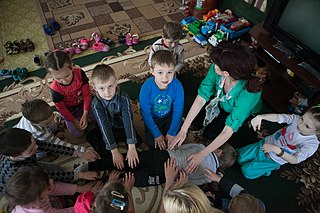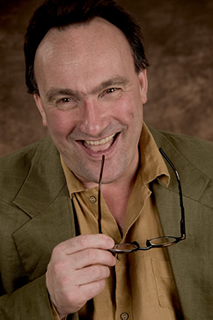
Cognitive behavioral therapy (CBT) is a psycho-social intervention that aims to reduce symptoms of various mental health conditions, primarily depression and anxiety disorders. Cognitive behavioral therapy is one of the most effective means of treatment for substance abuse and co-occurring mental health disorders. CBT focuses on challenging and changing cognitive distortions and their associated behaviors to improve emotional regulation and develop personal coping strategies that target solving current problems. Though it was originally designed to treat depression, its uses have been expanded to include many issues and the treatment of many mental health conditions, including anxiety, substance use disorders, marital problems, ADHD, and eating disorders. CBT includes a number of cognitive or behavioral psychotherapies that treat defined psychopathologies using evidence-based techniques and strategies.
Psychotherapy is the use of psychological methods, particularly when based on regular personal interaction, to help a person change behavior, increase happiness, and overcome problems. Psychotherapy aims to improve an individual's well-being and mental health, to resolve or mitigate troublesome behaviors, beliefs, compulsions, thoughts, or emotions, and to improve relationships and social skills. Numerous types of psychotherapy have been designed either for individual adults, families, or children and adolescents. Certain types of psychotherapy are considered evidence-based for treating some diagnosed mental disorders; other types have been criticized as pseudoscience.
Group psychotherapy or group therapy is a form of psychotherapy in which one or more therapists treat a small group of clients together as a group. The term can legitimately refer to any form of psychotherapy when delivered in a group format, including art therapy, cognitive behavioral therapy or interpersonal therapy, but it is usually applied to psychodynamic group therapy where the group context and group process is explicitly utilized as a mechanism of change by developing, exploring and examining interpersonal relationships within the group.

Music therapy, an allied health profession, "is the clinical and evidence-based use of music interventions to accomplish individualized goals within a therapeutic relationship by a credentialed professional who has completed an approved music therapy program." It is also a vocation, involving a deep commitment to music and the desire to use it as a medium to help others. Although music therapy has only been established as a profession relatively recently, the connection between music and therapy is not new.
Clinical psychology is an integration of human science, behavioral science, theory, and clinical knowledge for the purpose of understanding, preventing, and relieving psychologically-based distress or dysfunction and to promote subjective well-being and personal development. Central to its practice are psychological assessment, clinical formulation, and psychotherapy, although clinical psychologists also engage in research, teaching, consultation, forensic testimony, and program development and administration. In many countries, clinical psychology is a regulated mental health profession.
Joseph Wolpe was a South African psychiatrist and one of the most influential figures in behavior therapy.

The expressive therapies are the use of the creative arts as a form of therapy, including the distinct disciplines expressive arts therapy and the creative arts therapies. The expressive therapies are based on the assumption that people can heal through the various forms of creative expression. Expressive therapists share the belief that through creative expression and the tapping of the imagination, people can examine their body, feelings, emotions, and thought process.
The Dodo bird verdict is a controversial topic in psychotherapy, referring to the claim that all empirically validated psychotherapies, regardless of their specific components, produce equivalent outcomes. It is named after the Dodo character in Alice in Wonderland. The conjecture was introduced by Saul Rosenzweig in 1936, drawing on imagery from Lewis Carroll's novel Alice's Adventures in Wonderland, but only came into prominence with the emergence of new research evidence in the 1970s.
Somatic Experiencing (SE) is a form of alternative therapy aimed at treating trauma and stress-related disorders, such as PTSD. The primary goal of SE is to modify the trauma-related stress response through bottom-up processing. The client's attention is directed toward internal sensations,, rather than to cognitive or emotional experiences. The method was developed by Peter A. Levine.

Play therapy refers to a range of methods of capitalising on children's natural urge to explore and harnessing it to meet and respond to the developmental and later also their mental health needs. It is also used for forensic or psychological assessment purposes where the individual is too young or too traumatised to give a verbal account of adverse, abusive or potentially criminal circumstances in their life.
The therapeutic relationship refers to the relationship between a healthcare professional and a client or patient. It is the means by which a therapist and a client hope to engage with each other and effect beneficial change in the client.
Child psychotherapy, or mental health interventions for children refers to the psychological treatment of various mental disorders diagnosed in children and adolescents. The therapeutic techniques developed for younger age ranges specialize in prioritizing the relationship between the child and the therapist. The goal of maintaining positive therapist-client relationships is typically achieved using therapeutic conversations and can take place with the client alone, or through engagement with family members.

Equine-assisted therapy (EAT) encompasses a range of treatments that involve activities with horses and other equines to promote human physical and mental health. Modern use of horses for mental health treatment dates to the 1990s. Systematic review of studies of EAT as applied to physical health date only to about 2007, and a lack of common terminology and standardization has caused problems with meta-analysis. Due to a lack of high-quality studies assessing the efficacy of equine-assisted therapies for mental health treatment, concerns have been raised that these therapies should not replace or divert resources from other evidence-based mental health therapies. The existing body of evidence does not justify the promotion and use of equine-related treatments for mental disorders.

Although modern, scientific psychology is often dated from the 1879 opening of the first psychological clinic by Wilhelm Wundt, attempts to create methods for assessing and treating mental distress existed long before. The earliest recorded approaches were a combination of religious, magical and/or medical perspectives. Early examples of such psychological thinkers included Patañjali, Padmasambhava, Rhazes, Avicenna and Rumi.
American Dance Therapy Association is the only organization solely dedicated to the growth and enhancement of the profession of dance/movement therapy. It was founded in 1966 by Marian Chace, Elissa Queyquep White, Claire Schmais, and several practitoners from across the United States.
Family therapy is a branch of psychotherapy focused on families and couples in intimate relationships to nurture change and development. It tends to view change in terms of the systems of interaction between family members.
Compassion-focused therapy (CFT) is a system of psychotherapy developed by Paul Gilbert that integrates techniques from cognitive behavioral therapy with concepts from evolutionary psychology, social psychology, developmental psychology, Buddhist psychology, and neuroscience. According to Gilbert, "One of its key concerns is to use compassionate mind training to help people develop and work with experiences of inner warmth, safeness and soothing, via compassion and self-compassion."
Mary O'Donnell Fulkerson (1946–2020) was an American dance teacher and choreographer. Born in the United States, she developed an approach to expressive human movement called 'Anatomical Release Technique' in the US and UK, which has influenced the practice of dance movement therapy, as seen in the clinical work of Bonnie Meekums, postmodern dance, as exemplified by the choreography of Kevin Finnan, and the application of guided meditation and guided imagery, as seen in the psychotherapeutic work of Paul Newham.

Paul Newham is a retired British psychotherapist known for developing techniques used in psychology and psychotherapy that make extensive use of the arts to facilitate and examine two forms of human communication: the interpersonal communication through which people speak aloud and listen to others, and the intrapersonal communication that enables individuals to converse silently with themselves. His methods emphasise the examination of traumatic experiences through literary and vocal mediums of expression, including creative writing, storytelling, and song. He is cited by peers as a pioneer in recognition of his original contribution to the expressive therapies.
Sexual trauma therapy is medical and psychological interventions provided to survivors of sexual violence aiming to treat their physical injuries and cope with mental trauma caused by the event. Examples of sexual violence include any acts of unwanted sexual actions like sexual harassment, groping, rape, and circulation of sexual content without consent.







